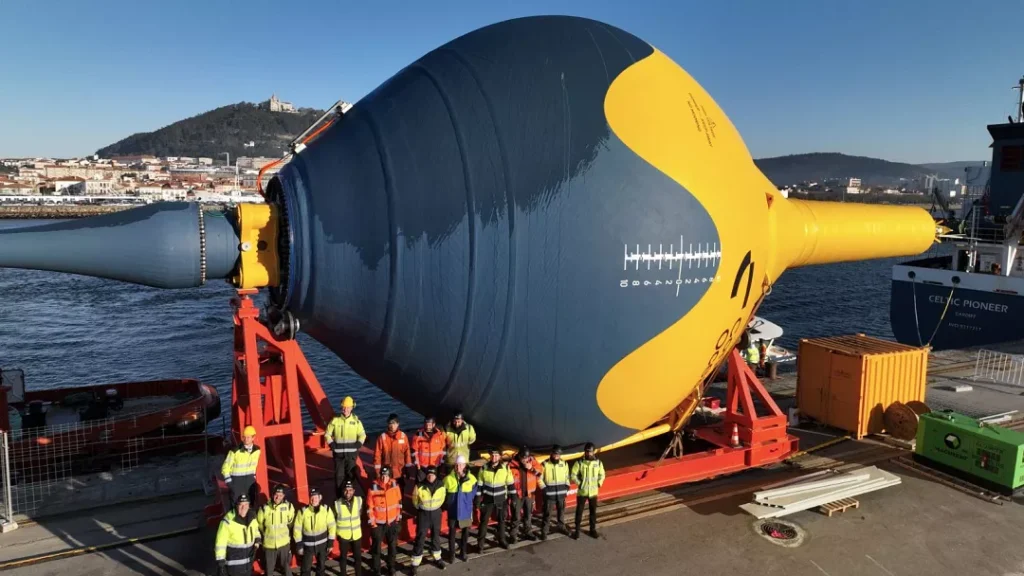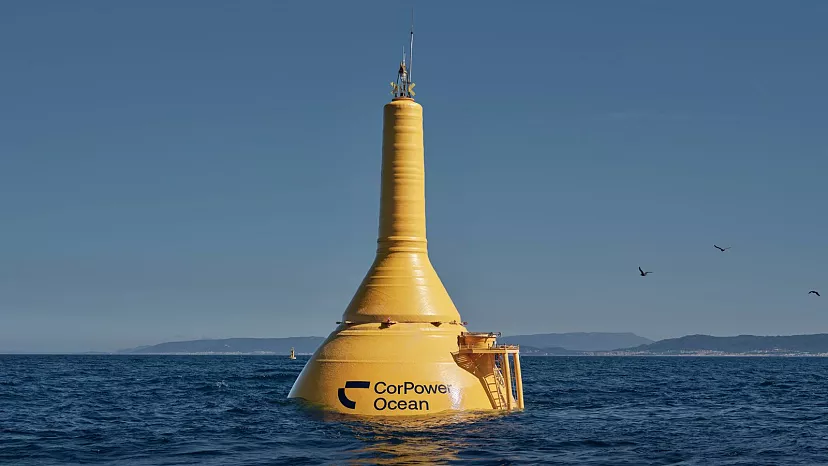The Untapped Power of Ocean Waves

(Copyright CorPower Ocean)
Oceans cover 71% of the Earth’s surface and represent one of the most abundant yet underutilized renewable energy sources. Wave energy, with its immense potential, could play a crucial role in the transition to clean energy.
According to the International Energy Agency (IEA), ocean power generation must expand by 33% annually to achieve net-zero emissions by 2050. The Intergovernmental Panel on Climate Change (IPCC) estimates that wave energy could generate up to 29,500 terawatt-hours (TWh) per year—nearly ten times Europe’s total electricity consumption and more than the global electricity production in 2018.
European countries along the Atlantic, such as Spain, France, and Ireland, have the highest wave energy potential. Tidal energy, which relies on predictable gravitational cycles rather than weather conditions, offers additional reliability. With an estimated global potential of 800-1,200 TWh, it can help balance the grid and ensure a steady electricity supply.
A Wave Energy Converter Inspired by the Human Heart

(CorPower Ocean’s first full-scale wave energy converter is deployed off the northern coast of Portugal – CorPower Ocean)
Dr. Stig Lundbäck, a heart specialist, found inspiration in the pumping mechanism of the human heart when co-founding CorPower Ocean in 2009. His vision led to the development of CorPack, a revolutionary wave energy converter designed to generate stable electricity from ocean waves.
The CorPack device, a massive buoy constructed from durable, lightweight materials, mimics the way the heart uses hydraulic pressure to pump blood in one direction. It works by applying tension to pull itself downward while waves push it upward. This motion is converted into rotational energy, which is then transformed into electricity by internal generators.
This innovative design allows CorPack to generate over five times more electricity per tonne of equipment compared to previous wave energy technologies. CorPower Ocean’s first full-scale wave energy converter is now operational off the northern coast of Portugal, supplying power to the Portuguese grid.
The Challenges and Opportunities of Wave Energy
Despite its potential, wave energy technology lags behind wind and solar due to challenges in commercial viability and durability. While wind and solar have significantly reduced costs and demonstrated reliability, wave energy faces rigorous demands for consistent performance and resilience against harsh ocean forces. Many early prototypes have struggled to perform efficiently, leading to limited investments in the sector.
However, companies like CorPower Ocean are making strides in overcoming these barriers. By securing research grants and EU investments, they have successfully deployed their device in real-world conditions. Other innovators in the field include Italian energy company ENI’s Inertial Sea Wave Energy Converter, the Chinese-built Nanku floating generator, and Finland-based AW-Energy’s WaveRoller, which utilizes large underwater panels.
The Future of Wave Energy in Europe and Beyond
For wave energy to gain traction, it must not only be technologically feasible but also economically viable and socially accepted. Countries exposed to strong Atlantic swells—such as Portugal, Spain, France, Ireland, and the UK—offer the most favorable conditions for large-scale wave energy deployment. Norway, with its extensive coastline and remote island communities, also presents a strong market where wave power could reduce grid costs and enhance energy independence.
While wave energy still faces hurdles, its high energy density and reliability compared to other renewables make it a promising contender in the future of clean energy. With continued investment, technological advancements, and supportive policies, wave energy could soon become a key player in the global renewable energy landscape.


